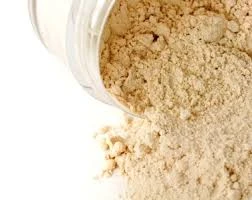The Role of Ammonium Thiocyanate in the Study of Ferric Sulfate
Ferric sulfate (Fe2(SO4)3) is a versatile compound with applications in water treatment, paper manufacturing, and various chemical processes. When combined with ammonium thiocyanate (NH4SCN), an interesting array of chemical interactions occurs that are beneficial for educational and research purposes.
Understanding the Components
Ferric sulfate is typically encountered as a yellowish-brown solid, soluble in water, and it dissociates to release ferric ions (Fe³⁺) and sulfate ions (SO4²⁻). These ferric ions are essential in various biological processes and can act as coagulants in water treatment by helping to remove impurities and solids from water.
On the other hand, ammonium thiocyanate is a colorless salt that consists of ammonium ions (NH4⁺) and thiocyanate ions (SCN⁻). It is commonly used in analytical chemistry and serves as a reagent in many reactions, particularly in the detection of metal ions, thanks to its ability to form complexes with them.
Complex Formation Between Ferric Sulfate and Ammonium Thiocyanate
When ferric ions from ferric sulfate encounter thiocyanate ions from ammonium thiocyanate, they form a complex known as ferric thiocyanate (Fe(SCN)²⁺). This complex is not only significant in terms of chemistry but is visually striking, exhibiting a deep red color. This property makes it a useful indicator in various qualitative analyses, especially in determining the presence of Fe³⁺ ions in solution.
The reaction can be summarized by the equation \[ \text{Fe}^{3+} + \text{SCN}^- \rightarrow \text{Fe(SCN)}^{2+} \]
This reaction is reversible and is influenced by factors such as concentration, temperature, and the presence of other ions. The formation of the colored complex can thus be used to gauge the amount of ferric ion present, which is crucial in both laboratory settings and industrial applications.
feso4 nh4scn

Practical Applications
The interaction between ferric sulfate and ammonium thiocyanate serves educational purposes as well. In chemistry laboratories, students can perform experiments to visualize the formation of ferric thiocyanate, allowing them to understand concepts such as complexation, chemical equilibrium, and spectrophotometry. By measuring the intensity of the red color, students can quantitatively assess the concentration of ferric ions, reinforcing their learning of concentration units and analytical techniques.
In industry, the ability to detect and measure ferric ions is essential in processes ranging from water purification systems to the production of chemical intermediates. By understanding the interaction between these compounds, industries can optimize their processes, ensuring efficiency and environmental safety.
Environmental Considerations
While both ferric sulfate and ammonium thiocyanate are effective in their respective applications, their usage must be monitored due to potential environmental impacts. For instance, the discharge of excessive amounts of ferric compounds into aquatic ecosystems can lead to toxicity issues for aquatic life. Similarly, thiocyanate can be harmful in high concentrations, especially considering its potential to release cyanide ions under certain conditions.
Thus, industries employing ferric sulfate and ammonium thiocyanate must implement proper waste management strategies. Regulatory compliance and the adoption of green chemistry principles can help mitigate these risks, promoting safer practices.
Conclusion
The interaction between ferric sulfate and ammonium thiocyanate provides a rich area of study within chemistry, offering insights not only into fundamental chemical principles but also into practical applications in various fields. Understanding these relationships is vital, enhancing our capabilities in analysis, industry, and environmental protection. As research continues to evolve, harnessing the full potential of these compounds while ensuring safety and sustainability will be paramount. The vibrant red color of the ferric thiocyanate complex serves as a symbol of the critical connections between chemistry, education, and practical application in our modern world.

